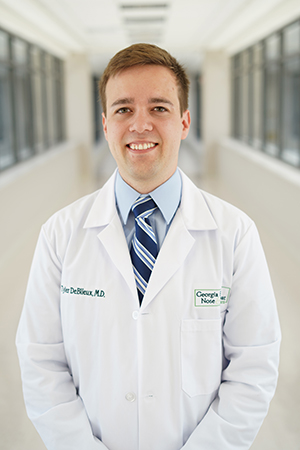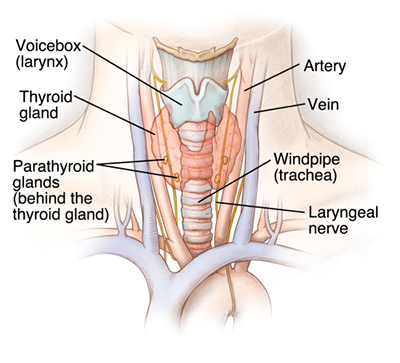What are thyroid nodules?
Miscellaneous
St. Joseph’s/Candler Physician Network – ENT Dr. Tyler DeBlieux discusses the anatomy of the thyroid gland
Despite its small size, the thyroid is a powerful gland that regulates many functions of the human body. It’s also prone to many disorders, including thyroid nodules that sometimes lead to cancer.

The thyroid gland is located in the front of the neck, sitting below the larynx (voice box) and on top of the windpipe. The two-inch gland consists of two lobes – one on each side of the windpipe – connected by a small bridge of thyroid tissue called the isthmus. Imagine the shape of a butterfly, describes St. Joseph’s/Candler Physician Network – ENT Dr. Tyler DeBlieux.
The thyroid is responsible for producing several hormones collectively called thyroid hormones. Thyroid hormones regulate different areas of the body, mostly influencing metabolism, but also growth and development, body temperature and assisting with the function of skin, hair, eyes, heart and intestine.
The thyroid gland is susceptible to several disorders. Most commonly these include:
- Hyperthyroidism: The gland produces too much thyroid hormone causing heart palpitations, sweats and excessive weight loss.
- Hypothyroidism: The gland produces too little thyroid hormone causing weight gain, depression, waxy skin and brittle hair.
- Thyroid nodules: A small abnormal mass or lump found in the thyroid gland that is rarely cancerous.
About thyroid nodules
Thyroid nodules are extremely common, Dr. DeBlieux says. “If you take 100 people on the street and take an image of their thyroid gland, probably between 50 to 60 percent of people would have some nodule.”
The good news is that only about five percent of those nodules are cancerous, Dr. DeBlieux says. The American Cancer Society estimates in 2019 about 52,000 new cases of thyroid cancer will be diagnosed in the United States with only about 2,100 resulting in death.
“If you do have a thyroid cancer, it’s very treatable and a very curable cancer,” Dr. DeBlieux says.

While most nodules are not cancerous that doesn’t mean they don’t come without side effects. Sometimes these bumps become too large which can cause difficulty swallowing or breathing. Thyroid nodules also can lead to hyperthyroidism.
It’s not always clear what causes nodules to form on the thyroid gland, but some cases have been linked to chronic inflammation of the thyroid, iodine deficiency in the diet or an unexplained overgrowth of thyroid tissue.
While anyone can develop thyroid nodules, women and older populations are more likely to develop these bumps, Dr. DeBlieux says. In fact, it’s estimated that by the age of 60, half of all people have them. A family history of thyroid nodules or thyroid cancer also may be associated in some patient cases.
For some people, thyroid nodules may cause no problems and can be monitored by a primary care physician. They are often small and only detected by a physical exam or an ultrasound of the thyroid. When patients begin to experience side effects of thyroid nodules, an ENT can treat it by recommending medications or removal of the nodules and/or thyroid gland.
“You can live without the thyroid gland. You have to take medication for the rest of your life that replaces the thyroid hormones,” Dr. DeBlieux says. “Many people are on thyroid hormone replacement medication and it works well.”
For more information about Dr. DeBlieux and St. Joseph’s/Candler Physician Network – ENT, please visit our website.